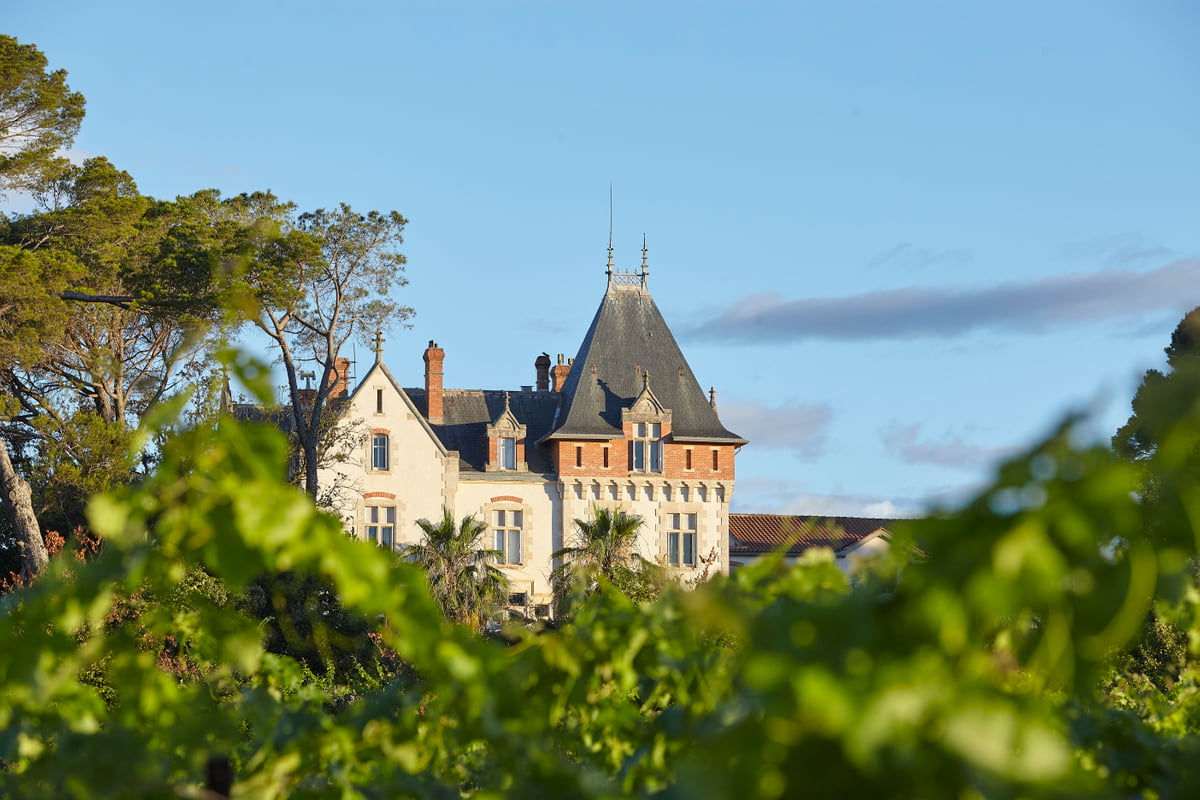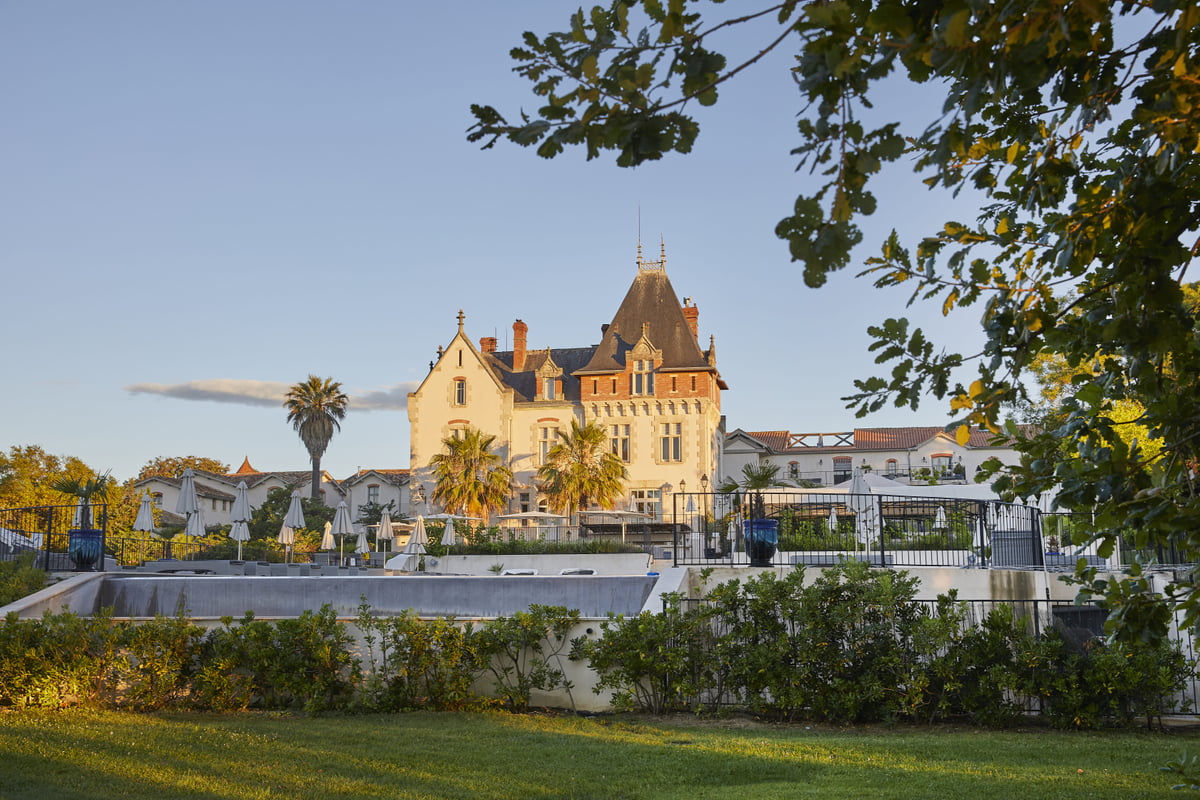

OUR PHILOSOPHY
The restoration and operation of châteaux and wine estates as exceptional destination locations, preserving and enhancing their intrinsic beauty and character, in perfect integration with their local, natural, social, cultural, and economic environment.
When we bought Château Les Carrasses in 2008, the estate had been abandoned for a long time 20 years. Our idea was to transform it into an "à la carte" holiday destination for offer our customers breaks that require no compromise and give them choice, without being forced into a "package".
Thus, like the best French wines, the objective was to create a "blend" of the best traditional accommodation options: the facilities and style of a quality hotel, the privacy and The practical side of renting a villa, the charm and authenticity of a working wine estate and the relaxed atmosphere and service of a private club. Although we don't necessarily have every aspect of every item, we have tried to make sure that we have all the best options and that their succession forms a coherent whole. We We hope this will be your opinion too.
It was also very important to us that the domain be an integral part and a positive contributor to the local community. This manifests itself in several ways. One of the most Important: We prioritize the employment of local populations. This sometimes creates challenges – language skills may not be perfect for example – but we believe that It's a price worth paying. Not only do we benefit from the wealth of local knowledge on the areas, their history and their environment, but good full-time jobs enrich also the local economy, allowing young people to live and raise families in their villages of origin.
Beyond employment, we ensure that the estate is open and welcoming to both locals than for residents. We believe that having a mix of local customers, French and foreigners is the key to a great experience for all our visitors.
The employment of the local population and the accessibility of the area create good local dynamics and "anchors" the Château in the community, this relationship is clearly felt by our customers who, During their stay, they interact with local people both on and off the estate.
We are fortunate to live and work in a beautiful natural environment, it is therefore it is essential for us to do everything to minimize the impact of our operations and ensure that the environment is preserved for our children. This imperative guides our approach on many aspects of the daily operation of the estate: recycling, cleaning products natural and organic throughout the estate, local products (organic if possible) in the restaurant, elimination of glyphosates in gardens and reduction of vineyard treatments.
We wanted places that were both conscious and respectful of traditions, and modern and adapted to the demands and tastes of today's guests. Although we do our best to ensure that If you had a pleasant time with us, please feel free to share your comments with us, preferably during your visit so that we have the opportunity to resolve any malfunctions immediately.
We wish you a pleasant stay.
Karl, Anita & Laurent

OUR PHILOSOPHY
Introduced by the Greeks in the 5th century BC, winemaking in Languedoc was later developed by the Romans who shipped wines from Béziers and Narbonne across the Empire, creating in the process a landscape dotted with estates each with a villa in its center. This is the case of the St Pierre de Serjac estate with a large scale production, and its own clay pot manufacturing facility.
After the decline of the Empire, it was left to the monasteries to keep the wine tradition alive – both for the economic factor and for the Eucharistic necessity. It was in a Dominican monastery in Limoux around 1530 that this sparkling wine was invented, a technique transplanted to Champagne a century later by a monk named Dom Perignon.
Gradually however, the production of wine in the region is decreasing considerably, becoming over time a locally oriented activity with little export and even less vitality. Little is known of St Pierre during this period, although the estate continued to appear on maps through the Middle Ages and the 17th and 18th centuries, such as that of Serssac.
The wheel turns in the second half of the 19th century, when the period known as the "Eldorado of Wine" begins. With a surge in demand induced by industrialization and the need to hydrate factory workers with a daily ration of sterile, low-alcohol wine, over 80,000 ha were planted between 1840 and 1870, production intensifies and a vigorous wine market emerges.
In 1867, phylloxera, an aphid that decimates the roots, attacks European vines, leading to the collapse of production throughout Europe. Languedoc is seriously affected but paradoxically, this infestation sets the conditions for the acceleration of the market: With sandy soils capable of repelling the mite, the discovery that the grafting of American roots on French vines makes it possible to circumvent the problem , production picked up quickly and Languedoc found itself with perfect market conditions: peak demand and shortage of supply. With the opening of the Béziers-Paris railway line, reducing the transport time from four days to one, this boom gained momentum and the great fortunes of wine were made, centered on Béziers which, at this turning point of the century, is the richest city in France.
Château St Pierre was completely restored during this period. In 1896, Baron Cyprien de Crozals, heir to a great wine fortune created during the expansion period, commissioned the famous Bordeaux architect Louis-Michel Garros to restore an existing estate in St Pierre de Serjac, thus creating the current buildings. Garros responds in typical eclectic style and St Pierre is emerging as one of the most important in the region, producing almost a million liters of wine a year.
The turn of the century proved to be the high point, overproduction and the importation of cheap Algerian wine soon caused prices to collapse. Drinking water supplies, two world wars, changing tastes and the emergence of New World wines brought waves of competitive pressure to the industry. Les Carrasses, like many others, gradually declined, continuing to produce as they always had but selling into an indifferent market which had overseen its gradual decline.
Despite economic challenges, the Châteaux remained in the De Crozals family until 2011, when Baron Paul de Chefdebien sold it to Karl O'Hanlon and Laurent Bonfils, who were looking for land to renovate. The transformation of the Chateau and outbuildings took five years, during which time wine production was moved to the modern facility at nearby Domaine de Cibadies, with the current incarnation of the estate opening in 2016. After an overhaul of the vines and investments in the cellar, wine production on the estate restarted in 2018.

